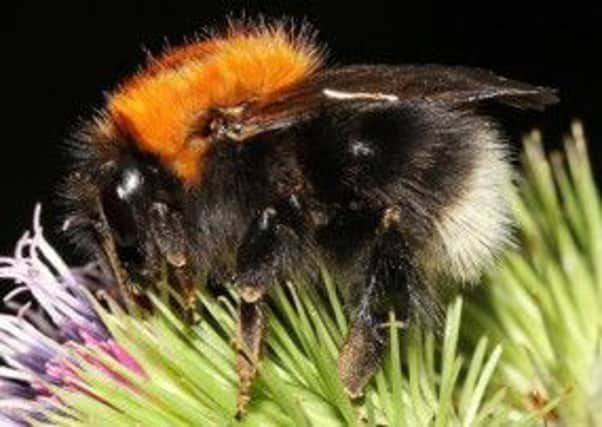Experts debate invasion of alien bumblebees


Scientists say the rapid spread of the European tree bumblebee, first sighted in the UK in 2001 and which arrived in Scotland last year, may help struggling native bees and boost vital services for agriculture.
However, studies have shown the continental bee is prone to a destructive parasitic worm that renders other bee species infertile.
Advertisement
Hide AdAdvertisement
Hide AdYet a quarter of the queens were still able to produce offspring, indicating they were immune to the infection.
Experts cannot yet make up their minds whether this is a good or bad thing.
Researchers also discovered the foreign bee – Bombus hypnorum – may reduce the spread of infection among British bees. And because it feeds on nectar from a wide range of flowers, the foreigner is hailed as a valuable new pollinator for wild and cultivated plants.
Researcher Catherine Jones, from Royal Holloway, University of London, is in the “good” camp. She said: “Since its arrival in the UK, the tree bumblebee has been rapidly spreading, despite high levels of this castrating parasite. Bees are essential to our food chain and the populations of our native bumblebees have declined in recent decades.
“The arrival of tree bumblebees could be hugely beneficial to us by absorbing parasite pressure from our native species, as well as helping to pollinate wild plants and crops.”
The tree bumblebee is unusual in that it nests high above the ground and is often found in urban gardens – typically in the eaves of houses and abandoned bird-nesting boxes.
Most native bumblebees nest in holes in the ground or on the surface in tussocky grassland.
The distinctive bee, which has a light brown and black body with a white tip, was first spotted in Scotland almost a year ago. It has been found at several sites in the Borders and central Lowlands.
Advertisement
Hide AdAdvertisement
Hide AdWith a rapid spread of around 4,500 square miles per year, it is soon expected to be found throughout the nation.
But despite the potential benefits, scientists are warning the newcomers may also pose a threat to native species whose numbers are dwindling as a result of intensive agriculture, loss of meadows and parasites.
Professor Mark Brown at Royal Holloway added: “While these findings show promising signs for bee populations in the UK, we still don’t know whether there could be any negative impacts if the bumblebees compete for food or nesting sites.”